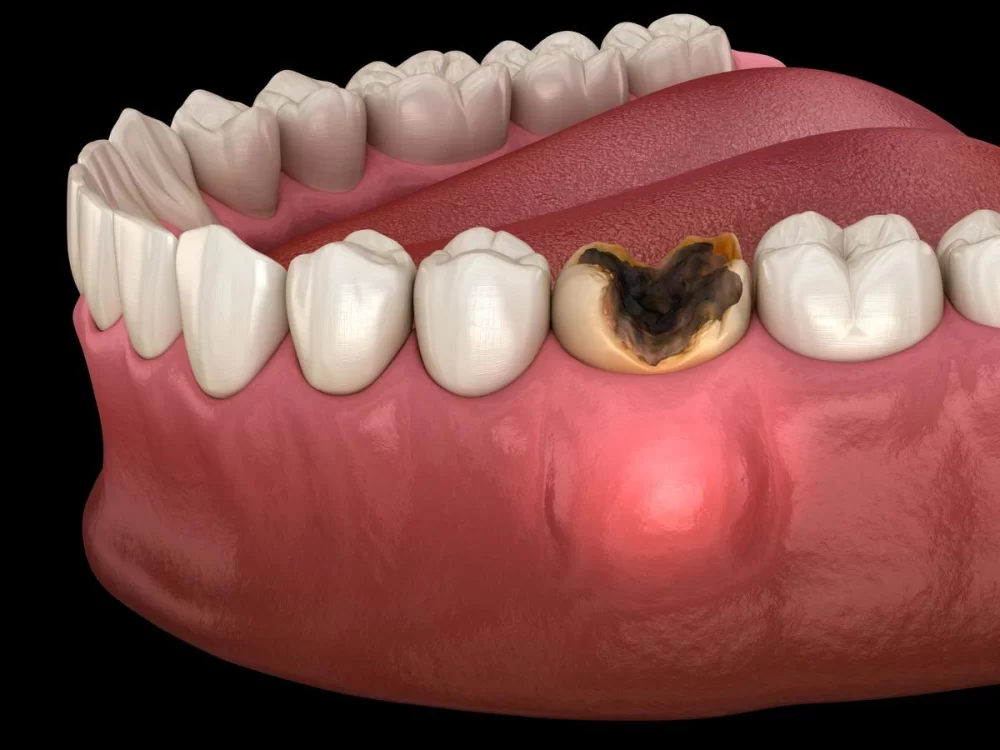
Treatment Options for a Painful Tooth Infection
- 1. What Is a Tooth Infection?
- 2. Symptoms of a Tooth Infection
- 3. When to Seek Dental Care for a Tooth Infection
- 4. Treatment Options for a Painful Tooth Infection
- 5. Real-Life Case: Dealing with a Tooth Infection
- 6. Take Action: Prevent Tooth Infections with Proper Care
1. What Is a Tooth Infection?
A tooth infection, also known as a dental abscess, occurs when bacteria invade the tooth, often due to untreated cavities, gum disease, or trauma. The infection typically starts in the pulp (the soft tissue inside the tooth), and if left untreated, it can spread to surrounding tissues, bones, and even the bloodstream. A tooth infection can cause severe pain, swelling, and other uncomfortable symptoms, making it essential to seek treatment promptly.
2. Symptoms of a Tooth Infection
Common symptoms of a tooth infection include:
- Severe tooth pain: A constant throbbing pain that may worsen with chewing or touching the affected area.
- Swelling in the gums or face: Red, swollen gums near the infected tooth or facial swelling may indicate an abscess.
- Bad breath: A persistent bad taste or foul-smelling breath can result from infection in the mouth.
- Sensitivity to hot or cold: Increased sensitivity to temperature changes can occur, especially when consuming food or drinks.
- Fever: A fever may accompany a tooth infection if it has spread to other areas of the body.
If you notice any of these symptoms, it's crucial to seek treatment right away to prevent the infection from worsening.
3. When to Seek Dental Care for a Tooth Infection
If you experience persistent tooth pain, swelling, or any of the other symptoms listed above, it’s essential to seek dental care immediately. A tooth infection can spread quickly, and untreated infections can lead to tooth loss or more serious health complications, such as sepsis. If the pain becomes unbearable or you notice a pus-filled abscess, do not delay in seeing a dentist. Early intervention can prevent complications and provide relief from pain.
4. Treatment Options for a Painful Tooth Infection
The treatment for a tooth infection depends on the severity of the infection and the underlying cause. Common treatment options include:
- Antibiotics: In some cases, your dentist may prescribe antibiotics to help clear the infection, especially if it has spread beyond the tooth.
- Root Canal Treatment: If the infection is in the pulp of the tooth, a root canal may be necessary to remove the infected tissue and save the tooth.
- Tooth Extraction: In severe cases where the tooth is extensively damaged, the infected tooth may need to be extracted to prevent the spread of infection.
- Drainage of Abscess: If a pus-filled abscess is present, the dentist may need to drain the abscess to relieve pressure and reduce swelling.
- Over-the-counter Pain Relief: Pain relievers like ibuprofen or acetaminophen can help manage discomfort until professional treatment is available.
5. Real-Life Case: Dealing with a Tooth Infection
Consider the case of Mark, a 30-year-old man who ignored a small cavity in his back molar for several months. One night, he began to experience severe pain in the affected tooth. The pain worsened, and swelling appeared near his gumline. Mark’s dentist diagnosed him with an infected tooth and recommended a root canal to save the tooth. Had Mark sought treatment sooner, he could have avoided the infection and the need for more invasive procedures.
6. Take Action: Prevent Tooth Infections with Proper Care
Preventing tooth infections starts with maintaining good oral hygiene habits. Brush your teeth twice a day, floss regularly, and visit your dentist for checkups every six months. If you suspect you have a cavity or any signs of infection, don’t wait—seek professional care immediately. By taking these simple steps, you can protect your teeth and prevent painful infections.
For expert dental care and advice on treating or preventing tooth infections, visit Dentistry Toothtruth today to learn more and schedule your appointment.







 Leading Edge Oral Surgery Massapequa5.0 (1175 review)
Leading Edge Oral Surgery Massapequa5.0 (1175 review) Mission Dental Arts5.0 (167 review)
Mission Dental Arts5.0 (167 review) Dr. Nil Yucel, DDS4.0 (94 review)
Dr. Nil Yucel, DDS4.0 (94 review) Glendale Holistic Dentistry - Los Angeles Dentists Group4.0 (19 review)
Glendale Holistic Dentistry - Los Angeles Dentists Group4.0 (19 review) Nashville Dental Center4.0 (640 review)
Nashville Dental Center4.0 (640 review) ClearChoice Dental Implant Center4.0 (314 review)
ClearChoice Dental Implant Center4.0 (314 review) The Importance of Oral Health Education During Pregnancy for a Healthy Pregnancy
The Importance of Oral Health Education During Pregnancy for a Healthy Pregnancy Best Tips for Brushing Your Teeth Properly for Healthy Gums: Essential Techniques for Oral Health
Best Tips for Brushing Your Teeth Properly for Healthy Gums: Essential Techniques for Oral Health Why Skipping Dental Checkups Can Lead to Bigger Oral Health Problems
Why Skipping Dental Checkups Can Lead to Bigger Oral Health Problems Advantages of Porcelain Dental Restorations
Advantages of Porcelain Dental Restorations How Can Diabetes Cause Tooth and Gum Problems? Preventing and Managing Oral Health Issues
How Can Diabetes Cause Tooth and Gum Problems? Preventing and Managing Oral Health Issues Healthy Habits for Promoting Good Oral Health and Hygiene: Tips for a Healthy Smile
Healthy Habits for Promoting Good Oral Health and Hygiene: Tips for a Healthy Smile